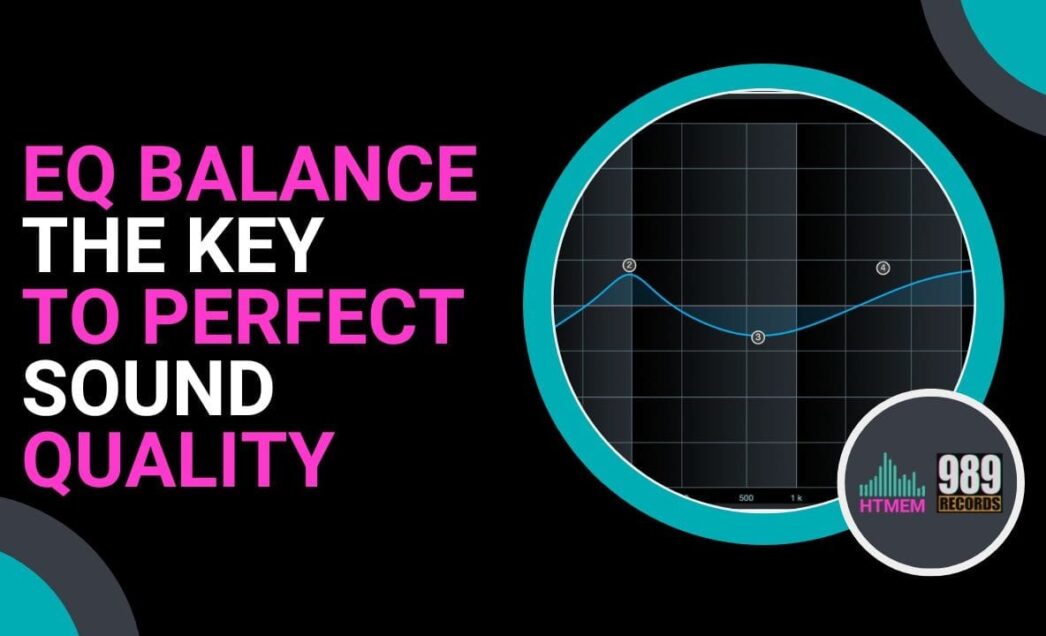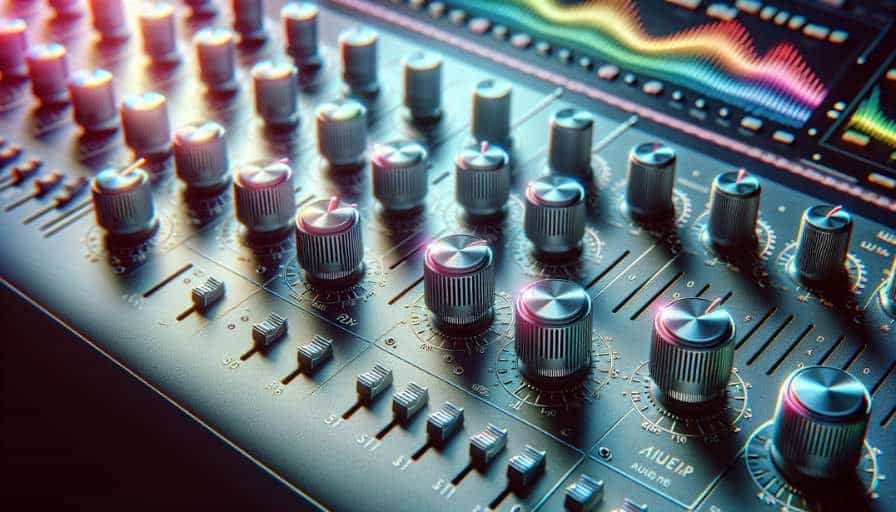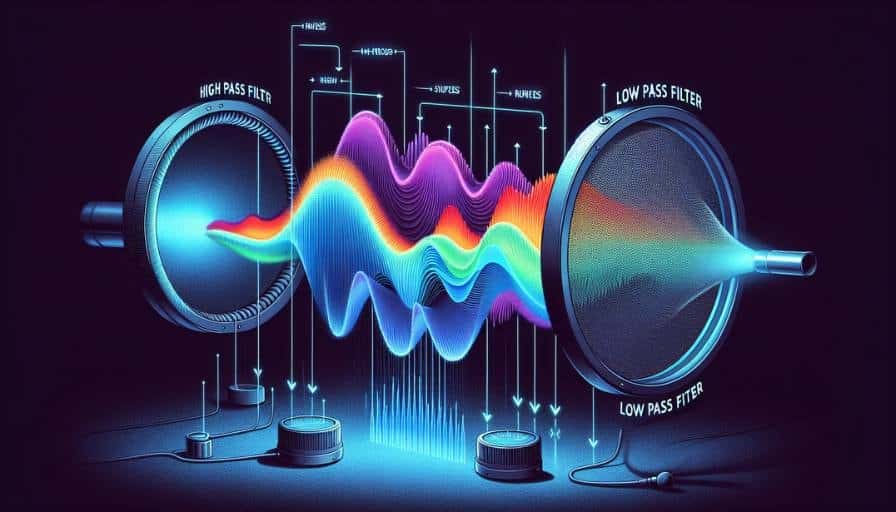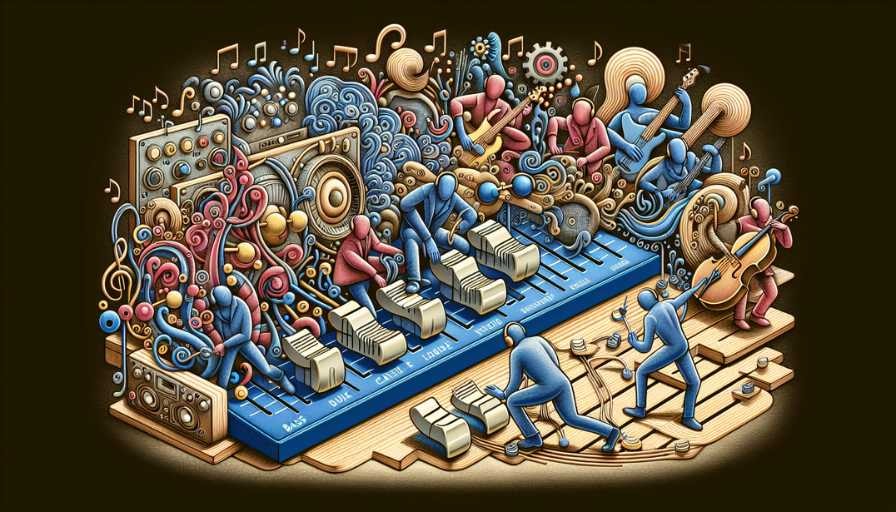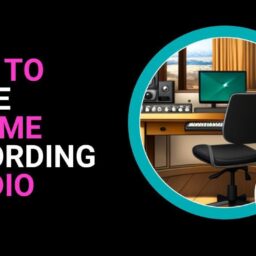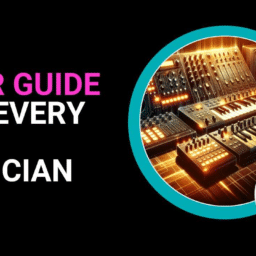Are you determined to crack the code of EQ balance for superior audio quality? Unlock the power of EQ in this guide, where we reveal precise strategies for balancing frequencies effectively. Grasp the essentials of frequency spectrum adjustment and implement our expert tips to ensure your audio resonates with clarity and depth. Perfect for both new enthusiasts and seasoned professionals, we provide clear and focused guidance to help you fine-tune your sound to excellence.
Key Takeaways
- Equalization (EQ) in audio production is about adjusting frequency bands to achieve a balanced mix, improving sound quality based on how we perceive sound with frequencies ranging from 20 Hz to 20 kHz.
- Parametric EQs provide precise control over sound with center frequency adjustment, bandwidth control (Q factor), and gain control, allowing for fine-tuning each mix element.
- EQ balance must be maintained across various listening environments and playback devices, adapting to both professional settings and casual listening preferences.
Table of Contents
The Essence of EQ Balance in Audio Production
– Understanding Frequency Bands
– Achieving Harmonic Balance
– The Role of Human Hearing
Fine-Tuning with Parametric EQ
– Adjusting Center Frequency
– Controlling Bandwidth with Q Factor
– Gain Control for Boost or Cut
Filters at Work: High Pass and Low Pass
– Removing Low Frequency Rumble
– Attenuating Higher Frequencies
Practical EQ Techniques for Balanced Sound
– Carving Out Space for Each Element
– Enhancing Bass and Treble Controls
– Managing Midrange for Vocal Clarity
Common EQ Balancing Challenges and Solutions
– Tackling Muddy Mixes
– Brightening Dull Mixes
– Avoiding Over-EQing
Advanced EQ Concepts for Audio Engineers
– Subtractive EQ vs. Additive EQ
– Dynamic EQ for Responsive Adjustments
– The Impact of Stereo Imaging on EQ Balance
EQ Balance in Different Listening Environments
– Adapting EQ Settings for Consumer Devices
– Professional Environments vs. Casual Listening
Summary
FAQ
The Essence of EQ Balance in Audio Production
Equalization, or EQ as it’s affectionately known by sound aficionados, is not just a knob or a slider on a mixing console. It’s the alchemy of audio production, where the manipulation of an audio signal’s frequency spectrum can breathe life into music or dialogue. Imagine EQ as a sculptor’s tool, with each adjustment serving a purpose: polishing the bright spots, smoothing the rough edges, and ensuring each element of the audio harmonizes with the next. It’s this artful balance of frequencies that can elevate a mix from mundane to mesmerizing.
At the heart of audio equalization lies a profound understanding of frequency bands. These bands span from the deep, resonant bass to the crisp, airy treble, each with a distinct impact on the audio spectrum. By adjusting these bands, audio engineers can craft a sound that resonates perfectly across the vast canvas of human hearing. It’s a delicate dance of boosting and cutting, shaping the sound until it fits the desired auditory landscape.
Achieving such balance, however, is not solely about the technical manipulation of frequencies; it’s about understanding the way we perceive sound. The role of human hearing in EQ adjustments is fundamental, as the human ear can detect a range from a low rumble of 20 Hz to the high pitch of 20 kHz. This remarkable range is where the magic of EQ unfolds, allowing audio engineers to tailor sounds that are not only technically precise but also emotionally captivating. Adjusting the ‘Q factor’ influences the ‘narrow bandwidth’, allowing for selective boosts and cuts, which is crucial for achieving the desired precision in sound sculpting.
Understanding Frequency Bands
The frequency spectrum is a vast playground for audio engineers, with each frequency band holding the key to distinct elements of sound. On the lower end of the spectrum, you’ll find the pulse of the bass and the thump of the drums that anchor a track with power and depth. As you ascend the spectrum, cymbals and vocals introduce high frequencies that can cut through the mix with clarity and precision. Balancing these different frequency bands is crucial for achieving a rich and vibrant sound.
The art of EQ is in knowing how to navigate these bands effectively. Each instrument has its signature frequency range, including:
- The sub-bass that underpins the rhythm
- The fundamental frequencies that give body to bass guitars and kicks
- The attack of strings that adds bite to kicks, drums and guitars
- The shimmering overtones that lend sparkle to cymbals
The challenge for audio engineers is to blend these different frequency components seamlessly, ensuring that each instrument finds its rightful place in the audio spectrum without stepping on another’s toes.
Achieving Harmonic Balance
Striking the right chord in music production often boils down to crafting a harmonic balance. This means fine-tuning the presence frequency range, which sits snugly between the midrange and treble frequencies, to bring forth a clear and well-defined mix.
It’s akin to tuning a finely crafted instrument, where each adjustment to the bass and treble controls on the parametric equalizer resonates with the rest of the audio spectrum, creating a sound that is both balanced and beautiful.
The Role of Human Hearing
The quest for perfect sound quality is, in many ways, a tribute to the capabilities of the human ear. With a frequency range from 20 Hz to 20 kHz, our hearing defines the boundaries within which audio engineers operate. Every nuance in the audio signal is processed and refined with the listener in mind, ensuring that the final output is not only audible but also a pleasure to the senses.
This is the foundation upon which all EQ adjustments rest, serving as a constant reminder of the power and sensitivity of human hearing in the realm of audio processing.
Fine-Tuning with Parametric EQ
Parametric EQ stands as a cornerstone in the world of audio frequencies, offering a level of precision that graphic EQs can’t match. It’s a tool that provides audio engineers with the means to make pinpoint adjustments, turning the complex tapestry of sound into a masterpiece of frequency balance. With its three main controls—center frequency, bandwidth (Q factor), and gain—parametric equalizers allow for surgical strikes and gentle nudges in the audio spectrum, ensuring each element of the mix finds its perfect place. A Q value greater than 1 results in a narrow bandwidth, enabling precise frequency manipulation for selective boosts and cuts.
When it comes to parametric EQ, the center frequency adjustment is critical. It allows audio engineers to zero in on a specific frequency, from the lowest bass to the highest treble, and adjust it to perfection. This precision targeting is essential when dealing with problematic frequencies that can muddy a mix or when a specific element needs to stand out. By manipulating the center frequency, one can eliminate unwanted frequencies with the finesse of a skilled craftsman, ensuring that every note and soundwave contributes positively to the overall sound quality.
Another element of the parametric EQ’s power is the Q factor, which determines the bandwidth of the EQ adjustment. With a higher Q, audio engineers can focus on a narrow frequency range, making adjustments that are both subtle and powerful. This precise control allows for the removal of unwanted frequencies without affecting the surrounding audio, akin to removing a single thread from a tapestry without disturbing the rest of the weave.
It’s this level of meticulous control that enables audio engineers to:
- Sculpt a balanced and harmonious audio signal
- Fine-tune specific frequencies
- Eliminate unwanted resonances
- Enhance the clarity and definition of individual instruments or vocals
By utilizing the Q factor effectively, audio engineers can achieve professional-quality sound in their recordings and mixes.
Adjusting Center Frequency
The ability to adjust the center frequency is like having the power to highlight or diminish individual notes in a symphony. Within the audible range of 20 to 20,000 Hz, the center frequency control allows for the precise targeting of any desired frequency, fine-tuning the audio signal to achieve the exact sound that’s sought after. It’s a tool that empowers audio engineers to enhance the audio equalization process, ensuring every frequency plays its part in the final composition.
By focusing on a specific frequency, parametric EQs enable the removal of unwanted noises from an audio signal, which can be critical in achieving a cleaner mix. This is particularly important when unwanted low-frequency rumble or high-frequency noise is present, as these can cloud the clarity of the audio. With the ability to adjust the center frequency, audio engineers can carve out these problematic frequencies, leaving behind a sound that is both pure and powerful.
Controlling Bandwidth with Q Factor
The Q factor, or quality factor, of an EQ band is the key to controlling the scope of your frequency adjustments. It’s what determines whether your EQ touches are broad and sweeping or narrow and targeted. Think of it as the difference between painting with a broad brush or a fine-tipped pen. A higher Q value results in a narrower bandwidth, allowing for more precise control over specific frequencies without affecting the surrounding audio landscape too much. Specifically, a Q value greater than 1 leads to a narrow bandwidth, enabling more selective frequency adjustments, which is crucial for tasks like isolating and modifying particular sound elements without influencing adjacent frequencies.
In practice, adjusting the Q factor means you can hone in on just the right frequencies that need attention. It’s especially useful when dealing with resonant peaks or notches in the audio signal, where a tight bandwidth can effectively manage these issues without compromising the integrity of the other frequency ranges. Such precision is invaluable in the quest for the perfect equalization balance, enabling audio engineers to craft a sound that is both detailed and nuanced.
Gain Control for Boost or Cut
Gain control is the parametric EQ’s answer to sculpting the amplitude of the audio signal. With the ability to boost or cut up to 12 dB, it functions as the volume knob for specific frequency bands. Whether it’s about enhancing the rumble of bass frequencies or attenuating the sharpness of treble frequencies, gain control is a powerful ally in shaping the desired sound. It’s the final touch that can either amplify the beauty of the audio or reduce any excesses that detract from the overall sound quality.
However, as with any form of control, it must be used judiciously. Boosting too much can lead to distortion, while cutting excessively can strip away the body of the sound. That’s why many audio engineers favor a subtractive EQ approach, focusing on cutting rather than boosting to maintain headroom and ensure clarity. Gain control, when wielded with care, allows for the fine-tuning necessary to strike a perfect balance in the audio signal, ensuring that each element sings in harmony with the rest.
Filters at Work: High Pass and Low Pass
In the world of audio processing, filters are the gatekeepers that control which frequencies are allowed to pass through and which are held back. Among these, high pass and low pass filters stand out for their ability to clean up and refine the audio signal. High pass filters excel at eliminating low-frequency rumble that doesn’t contribute to the desired sound, while a low pass filter is adept at attenuating higher frequencies that can introduce harshness to the mix. Utilizing these filters is like curating the sounds that reach the listener’s ear, ensuring that only the most harmonious frequencies make the final cut.
The slope of these filters determines how drastic the cut-off is for frequencies outside the desired range. With steeper slopes, such as 24 or 96 dB per octave, frequencies above or below the threshold are almost completely eliminated, while softer slopes create a more gradual and transparent roll-off. It’s a versatile tool that can be adjusted to suit the needs of the audio, whether it’s about creating a clean and tight mix or allowing for a more natural and mellow transition between frequency ranges.
Removing Low Frequency Rumble
Low frequency rumble can be an unwelcome guest in any audio track, often sneaking in as distant traffic or machinery noise during recording sessions. High pass filters are the heroes in this scenario, progressively attenuating these lower frequencies to restore the purity of the sound. They’re particularly effective in cleaning up the audio from breath blasts of plosives or microphone rumble that may escape even the best pop screens.
By strategically applying high pass filters, audio engineers can:
- Remove those unneeded low frequencies that contribute to a muddy sound
- Clarify the audio
- Provide additional headroom, allowing for a more dynamic and balanced output.
Moreover, these filters can manage sibilance and the proximity effect in vocal recordings, ensuring that every word and nuance is heard clearly and without distortion.
Attenuating Higher Frequencies
While low frequencies can muddy a mix, uncontrolled high frequencies can create an equally disruptive experience. Low pass filters serve as the antidote, providing a smooth path for lower frequencies while attenuating the highs that can result in harshness or ‘fizz,’ especially in elements like distorted electric guitars. It’s a way of polishing the sound, ensuring that the high end of the audio spectrum complements rather than dominates the listening experience.
Employing low pass filters can help remove excess high-frequency content that may not be audible to all listeners but can still impact the overall sound quality. This is especially important in the upper echelons of the frequency range, where sounds above 16-18kHz can add an unnecessary edge to the audio. By attentively using these filters, audio engineers can craft a mix that is both pleasant to the ear and free from any high-frequency noise that may detract from the listener’s enjoyment.
Practical EQ Techniques for Balanced Sound
In the pursuit of sound perfection, practical EQ techniques are indispensable tools in the audio engineer’s arsenal. These techniques are not just about making adjustments; they’re about resolving frequency conflicts and shaping the sound to achieve a balanced mix that is pleasing to the ears. A systematic approach is often adopted: starting with filters to remove unnecessary frequencies, followed by selective cuts to minimize excesses, and finally, boosts to accentuate desired elements, always with the goal of finalizing a harmonious balance.
Carving out space for each instrument is a fundamental strategy for avoiding frequency clashes. This involves creating ‘pockets’ in the frequency spectrum to ensure that each instrument has its distinct place. It’s akin to arranging a well-orchestrated ensemble on stage, with each performer in their spotlight. Similarly, enhancing bass and treble controls can add the necessary weight or brightness to the mix, helping to refine the overall balance and sound quality.
As we delve deeper into the midrange, managing this frequency band becomes crucial for vocal clarity. The mid-range is dense with the fundamental frequencies of vocal and instrumental sounds, and it’s here that the clarity and presence of a track truly come to life. By employing EQ techniques that enhance vocal intelligibility and warmth, audio engineers ensure that the voice remains the focal point of the mix, distinct and clear amid the blend of instruments and effects.
Carving Out Space for Each Element
To avoid a cluttered mix where instruments compete rather than complement each other, it is essential to carve out specific frequency spaces for each element. This is done by making EQ adjustments that create ‘pockets’ in the frequency spectrum, allowing each instrument to resonate without encroaching on others. It’s a delicate process, one where reducing the level of conflicting frequencies is often more effective than increasing others, which can lead to a muddled sound.
Certain frequency ranges are pivotal for the definition and punch of the mix. For instance, carving out high mids between 1500Hz and 4kHz can give percussion and lead synths the space they need to cut through, while ensuring vocal clarity in the upper midrange frequencies from 2kHz to 4kHz can bring focus and definition to the mix. It’s a balancing act that requires a keen ear and a deep understanding of the frequency spectrum to masterfully allocate space for each mix element.
Enhancing Bass and Treble Controls
The low end of the frequency spectrum holds the foundation of a track, and enhancing bass frequencies between 60Hz and 250Hz is crucial for preventing them from overpowering the mix. A targeted boost around 80Hz can add the desired fullness to bass instruments, while making sure that the weight of the kick drum or bass guitar is properly balanced. This is where the bass and treble controls on your parametric equalizer come into play, allowing for personalized adjustments that satisfy both sound quality and listener preference.
On the other end of the spectrum, treble frequencies bring vibrancy and clarity to the mix. Adjusting these frequencies between 7kHz and 12kHz can add sparkle to instruments and contribute to the overall brightness of the track. Employing a bass shelf filter can offer a more nuanced approach to these adjustments, providing a tailored balance that enhances the listening experience without compromising the integrity of the other frequency ranges.
Managing Midrange for Vocal Clarity
The midrange is often referred to as the ‘heart’ of the frequency spectrum, containing most of the fundamental frequencies of vocal and instrumental sounds. It is in this range that vocal clarity and presence are most pronounced, and managing it correctly can mean the difference between a good mix and a great one. Using frequency sweeping methods to identify and emphasize the fundamental frequencies can greatly enhance the intelligibility of vocals around 1 kHz.
However, the midrange is also where frequency clashes are most common, requiring careful EQ adjustments to avoid muddiness and ensure warmth and atmosphere in the vocal sound. Focusing on the low-mid frequencies, from 250Hz to around 1500Hz, can help to carve out the necessary space for vocals without stepping on the toes of other instruments. Additionally, attentively managing certain frequencies around 5 kHz can improve the crispness of words in a vocal track, reducing harshness and ensuring that each lyric is delivered with clarity.
Common EQ Balancing Challenges and Solutions
No audio production journey is without its challenges, and EQ balancing is no exception. From muddy mixes that lack clarity to dull mixes that need brightening, and the ever-present danger of over-EQing, each problem requires a strategic solution. The debate among sound engineers often centers around the merits of additive versus subtractive EQ, with each approach offering its own set of solutions to these common issues.
Subtractive EQ, which involves the reduction of frequencies, is often the first line of defense against clashing frequencies and muddy sounds. It’s a method that cleans up the sound, making space for other instruments to shine through. On the flip side, additive EQ can be used to enhance presence and character in certain instruments or vocals without upsetting the overall balance of the mix. Balancing these two approaches can be the key to overcoming the challenges that arise during the EQ process.
Tackling Muddy Mixes
Muddiness in a mix is like a thick fog that obscures the distinct shapes of sound, typically caused by an excess of low-frequency energy from overlapping sources. To clear up the fog, reducing the muddy mid-frequency content, particularly around 200–250Hz, can dramatically enhance mix clarity. Carving out space in the low midrange for selected sounds and clearing it in other tracks is a vital step in cutting through the muddiness.
Balancing the sub-bass and bass frequencies is another effective strategy for dispelling muddiness. Here are some techniques to try:
- Enhance the ‘punch’ of the bass around 100-150 Hz to preserve definition without causing distortion from over-boosting the lower frequencies.
- Cut problematic frequencies using EQ techniques.
- Use the boost and sweep method to identify specific troubling frequencies and adjust accordingly.
These techniques can help improve sound quality and ensure a clear and well-defined audio output.
Brightening Dull Mixes
A dull mix can leave listeners yearning for more brilliance and clarity. Presence, spanning from 4kHz to roughly 7kHz, can add much-needed clarity, but excessive boosting in this range can lead to fatigue over time. Boosting should be done with caution, ensuring that the listener’s experience remains comfortable and enjoyable.
Similarly, brilliance or air in the range from 7kHz to 20kHz should be addressed with care to prevent introducing high-frequency noise into the mix. For elements like cymbals and other high-frequency instruments, adjustments around 12-16kHz can maintain their sparkle without overpowering the rest of the mix.
In vocals, dynamic EQ can be particularly effective in reducing sibilance with de-essing set between 4-8 kHz and mitigating harsh resonance in the ‘pain’ frequency area around 2-3 kHz. Such precision allows for a brighter and more engaging listening experience without sacrificing the natural sound of the recording.
Avoiding Over-EQing
Over-EQing is a common pitfall that can lead to an unnatural and unbalanced sound, often resulting from the overzealous application of EQ adjustments. Incremental changes are the key to avoiding this issue, as they allow for more control and subtlety in achieving the desired sound enhancement. If over-EQing occurs, here are some steps you can take to restore balance:
- Reset the EQ settings to their default values.
- Adopt a more cautious approach when making EQ adjustments.
- Make small, incremental changes and listen carefully to the effect they have on the sound.
- Use your ears as the ultimate judge of what sounds natural and balanced. By following these steps, you can avoid over-EQing and achieve a more professional and pleasing sound.
The art of EQ is not just about what you add but also what you choose to leave untouched. Achieving the desired sound often involves subtle adjustments and sometimes, the most effective change is to adjust the output gain after subtractive EQ rather than adding excessive frequencies. Being intentional with EQ decisions, setting clear goals, and avoiding unnecessary adjustments can go a long way in preserving the natural character of the music or audio being worked on.
Advanced EQ Concepts for Audio Engineers
As we delve deeper into the realm of audio engineering, advanced EQ concepts stand as landmarks for those seeking to refine their skills and understanding. These sophisticated equalizers used in broadcast and recording studios are not just about making detailed adjustments; they’re about eliminating unwanted sounds and accentuating the right elements to make certain instruments or voices stand out in the mix. However, it’s essential to remember that the application of EQ must be contextually driven, as not all audio situations benefit from EQ adjustments.
The conversation around advanced EQ often revolves around the debate of subtractive EQ versus additive EQ. Subtractive EQ focuses on attenuating certain frequencies to improve clarity and balance, while additive EQ emphasizes boosting frequencies to highlight specific aspects of the sound. Both have their rightful place in sound mixing and choosing between them should be based on the needs of the track, whether a frequency range is overpowering or lacking. Excessive use of EQ can introduce phase shifts, potentially degrading the sound quality and altering the original character of the recording.
Subtractive EQ vs. Additive EQ
The choice between subtractive and additive EQ is a strategic one, with each method serving a specific purpose in the mixing process. Subtractive EQ is akin to sculpting by removing excess material, creating space in the mix by attenuating competing frequencies and removing elements such as mud, resonance, and harshness. It’s a technique that often precedes compression, as it clears the way for a cleaner and more focused sound.
Conversely, additive EQ serves as a means of embellishment, often applied post-compression to emphasize the unique characteristics of a sound, such as adding brightness to high frequencies or accentuating the presence of certain elements. The decision on whether to utilize subtractive or additive EQ hinges on the specific needs of the track, with the goal of achieving a balanced and pleasing audio experience. Care must be taken to avoid overusing EQ, as this can lead to phase issues and a less natural sound.
Dynamic EQ for Responsive Adjustments
Dynamic EQ represents a revolutionary step forward in the field of equalization, offering a responsive approach that adjusts to the changing levels of an audio signal. Unlike static EQ, which applies fixed changes across the entire track, dynamic EQ operates more like a band-specific compressor. It applies gain changes to particular frequency bands only when they exceed a pre-set threshold, maintaining the integrity of an instrument’s sound while ensuring consistency in the frequency response.
This tool is particularly useful for managing dynamic elements within instruments, ensuring that every note is heard with the same clarity and balance. It’s an advanced concept that empowers audio engineers to make nuanced adjustments in real-time, responding to the ebb and flow of the music. With dynamic EQ, the audio signal is shaped not by a static set of rules but by the natural dynamics of the performance, resulting in a mix that breathes and moves with the music.
The Impact of Stereo Imaging on EQ Balance
Stereo imaging is another advanced concept that can significantly impact EQ balance. By strategically positioning sounds within the stereo field, audio engineers can create clarity and depth that extends beyond the capabilities of EQ adjustments alone. Some techniques for enhancing stereo imaging include:
- Using mid/side EQ to place bass frequencies in the center and spread high frequencies across the stereo image
- Using panning to position sounds at different points in the stereo field
- Using stereo widening plugins to create a wider soundstage
- Using reverb and delay effects to create a sense of space and depth
These techniques can help create a more immersive listening experience.
Implementing mid-side EQ to apply a high pass filter to the side channels around 100-200 Hz can focus the low-frequency content to the center of the mix, which tightens the bass and adds a sense of solidity to the overall sound. This technique not only affects the balance of frequencies but also the perception of space and dimension in the mix, illustrating the profound relationship between stereo imaging and EQ in creating a captivating audio experience.
EQ Balance in Different Listening Environments
Ensuring optimal sound quality across various playback systems is a challenge that audio engineers must navigate with skill and precision. From the confined space of car audio systems to the expansive acoustics of home theaters, each listening environment presents its unique set of characteristics that can significantly affect EQ settings. Car stereos, for example, can feature a wide range of frequency bands for EQ adjustments, while home theaters require careful consideration of room acoustics and speaker positioning.
The goal is to achieve a universally optimal sound quality, considering the diverse range of playback devices and environments in which listeners may engage with the audio. This means adapting EQ settings not only for technical accuracy but also for the personal preferences and listening habits of the end user, ensuring that the audio production resonates with its intended audience, regardless of where or how it is heard.
Adapting EQ Settings for Consumer Devices
Consumer devices such as smartphones and laptops often come with built-in EQ settings that cater to general listening experiences, albeit with limited adjustability. While these default settings are designed to enhance the overall audio experience, they may not always align with individual user preferences or the specific requirements of different types of content.
For those seeking a more personalized listening experience, the ability to create custom EQ presets on devices that allow such customization can make a significant difference. Content with predominant speech, such as podcasts or audiobooks, benefits from EQ settings that bring clarity to voice frequencies.
Music lovers, on the other hand, may prefer settings that highlight the balance between instrumental and vocal elements according to genre. And for an optimal movie-watching experience on small devices, EQ settings that emphasize dialogue clarity and provide a balanced soundstage are key.
Professional Environments vs. Casual Listening
The dichotomy between professional audio environments and casual listening spaces lies in the precision of EQ adjustments required. In a professional setting, where accurate sound reproduction is paramount, EQ adjustments must be meticulous, taking into account room acoustics, speaker placement, and the critical ears of audio professionals. These environments often demand an EQ approach that is technically precise and objectively measured.
Conversely, casual listening environments tend to be more forgiving, with listeners often preferring a sound that suits their personal taste rather than strict technical accuracy. In these spaces, EQ settings can afford to be less precise, focusing instead on enhancing the listening pleasure of the audience. The challenge lies in striking a balance between technical perfection and the subjective enjoyment of the sound, creating EQ settings that are both pleasing and broadly acceptable across different listening conditions.
Summary
Navigating the intricacies of EQ balance is akin to mastering a complex instrument, with each adjustment contributing to the overall symphony of sound. We’ve explored the importance of understanding frequency bands, the precision of parametric EQs, and the transformative power of filters. Practical techniques have been discussed for carving out space in the mix, enhancing bass and treble, and managing midrange for vocal clarity. We’ve tackled common challenges and delved into advanced concepts, all while considering the impact of different listening environments on EQ settings.
The journey through the art and science of EQ has been rich with insights and techniques, each designed to enhance the listening experience. Whether you’re an aspiring audio engineer or a seasoned professional, the mastery of EQ balance is a continual pursuit that requires both technical expertise and creative intuition. As we conclude this exploration, let the knowledge and strategies discussed inspire you to craft soundscapes that resonate with precision, emotion, and the perfect balance.
Frequently Asked Questions
What is the difference between parametric EQ and graphic EQ?
Parametric EQ provides precise control over specific frequencies, bandwidths, and gain levels, while graphic EQ offers fixed frequency bands with a set number of sliders for level adjustments. Therefore, the main difference lies in the level of control over the audio signal.
How do I avoid making my mix sound muddy?
To avoid making your mix sound muddy, reduce overlapping low and mid frequencies, use high pass filters to eliminate unnecessary low-frequency content, and carve out specific frequency spaces for each element in the mix to prevent clashes.
Can boosting certain frequencies improve the clarity of my mix?
Yes, boosting presence and brilliance frequencies can improve mix clarity, but be cautious to avoid introducing harshness or listener fatigue.
What is dynamic EQ and how does it differ from regular EQ?
Dynamic EQ adapts its equalization based on the input signal’s level, applying gain changes to specific frequency bands only when necessary. This differs from regular EQ by offering a more responsive and nuanced approach compared to static EQ.
How should EQ settings be adapted for different listening environments?
Adapt EQ settings based on the specific characteristics of each environment, such as room acoustics or frequency range, to achieve optimal sound quality.
Suggested Readings
How to Write Song Lyrics That Resonate
The Ultimate Beats Breakdown: Understanding EDM Electronic Music Essentials
The Gear Guide for Every EDM Musician
Practice and Enjoy!

